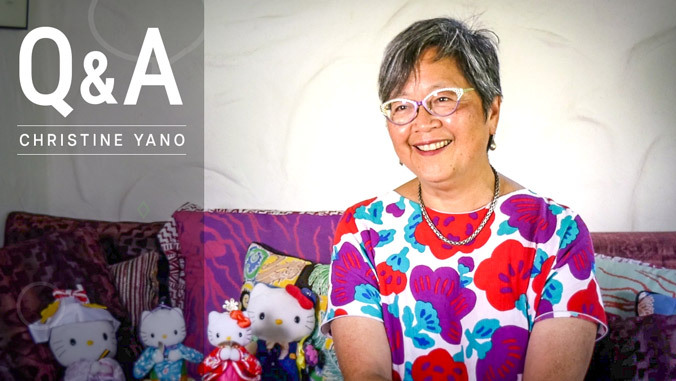Our Terms & Conditions | Our Privacy Policy
Q&A: Hello Kitty turns 50, UH expert explores iconʻs legacy
Reading time: 2 minutesChristine Yano
On November 1, Sanrio’s beloved character Hello Kitty celebrates her 50th anniversary. To mark this milestone, Christine Yano, professor emerita of anthropology at the University of Hawaiʻi at Mānoa, offered her insights into the character’s lasting appeal and significant role in shaping kawaii (cute) culture worldwide. Known for her expertise in cultural anthropology and Japanese popular culture, Yano authored Pink Globalization: Hello Kitty’s Trek Across the Pacific, which explores the icon’s journey as both a commercial phenomenon and a cultural symbol.
What sparked your interest in studying Hello Kitty?
In 1997, while teaching a course on Japanese popular culture at UH Mānoa, I casually included a lecture on Hello Kitty. The students loved it, but it was a conversation with our department secretary, Elaine, a huge fan, that made me realize how deeply Hello Kitty resonated with everyday people. That curiosity led me to research Hello Kitty further—both the corporate side and the fanbase.
What contributed to Hello Kitty’s global popularity?
Hello Kitty’s enduring appeal lies in her simplicity and adaptability. Her minimalist design, with no mouth, allows fans to project their own emotions onto her, making her a personal and emotional icon for people from all walks of life. Since her debut in 1974, she has crossed cultural boundaries, with Sanrio keeping her relevant through subtle design updates and innovative products like Hello Kitty wine. This balance of familiarity and innovation keeps fans engaged. Unlike Barbie, Hello Kitty remains a comforting and non-threatening symbol of sweetness and nostalgia, ensuring her lasting presence.
Is there anything during your research that surprised you?
I was surprised by many things, but the one that made global headlines was the revelation that Hello Kitty is not a cat. This came up during my work on the 2014 exhibition at the Japanese American National Museum. While writing labels, I referred to her as a feline, but Sanrio asked me to change it to “a friend” or “a girl.” When I mentioned this to a reporter, it became a viral story, shocking fans worldwide. A decade later, that headline is still making news, especially with Hello Kitty’s 50th anniversary.
How does Hello Kitty’s popularity in Hawaiʻi differ from other places?
In Hawaiʻi, she’s part of everyday life, woven into the cultural landscape. We don’t need her to symbolize minority identity like Japanese Americans in California might. One fun example: Sanrio released a version of Hello Kitty that “tans” as the summer progresses, which was a huge hit with Japanese tourists!
As an anthropologist, what’s your final take on Hello Kitty’s significance?
As an academic, I’m trained to be critical. But in today’s world, Hello Kitty brings joy and empathy, and I think there’s value in that. It’s comforting to see something so simple evoke such positive emotions.
Images are for reference only.Images and contents gathered automatic from google or 3rd party sources.All rights on the images and contents are with their legal original owners.



Comments are closed.